If all goes according to plan, Red Hook’s “back” will be unrecognizable within ten years.
The Los Angeles-based developer Est4te Four has a reputation for breathing new life into abandoned and derelict buildings. They’ve turned gritty neighborhoods in Milan and London into centers of culture and fashion.
Their current projects at 160 Imlay Street and 202 Coffey Street are set to transform Red Hook’s waterfront into an engine of creativity.
“We were attracted by [Red Hook’s] strong artistic atmosphere,” the developers say in an interview in Hidden Pl4ces, a glossy magazine created to promote the 160 Imlay project.
“Everything started because I discovered Red Hook through some friends. I felt it was a very undiscovered jewel,” says Aldo Andreoli, of AA Studio, the project’s architect. “It was so close to everything but distant in a certain way.”
Purchased in 2012 for $25 million, Est4te Four’s plans include converting the “underappreciated” and “underutilized” New York Dock Company building into a mix of commercial and residential spaces catering to artists and creatives.
The building’s previous owners struggled for 5 years before successfully receiving mixed-use rezoning approval in 2008, and Est4te Four is reaping the benefit of the past owner’s labor.
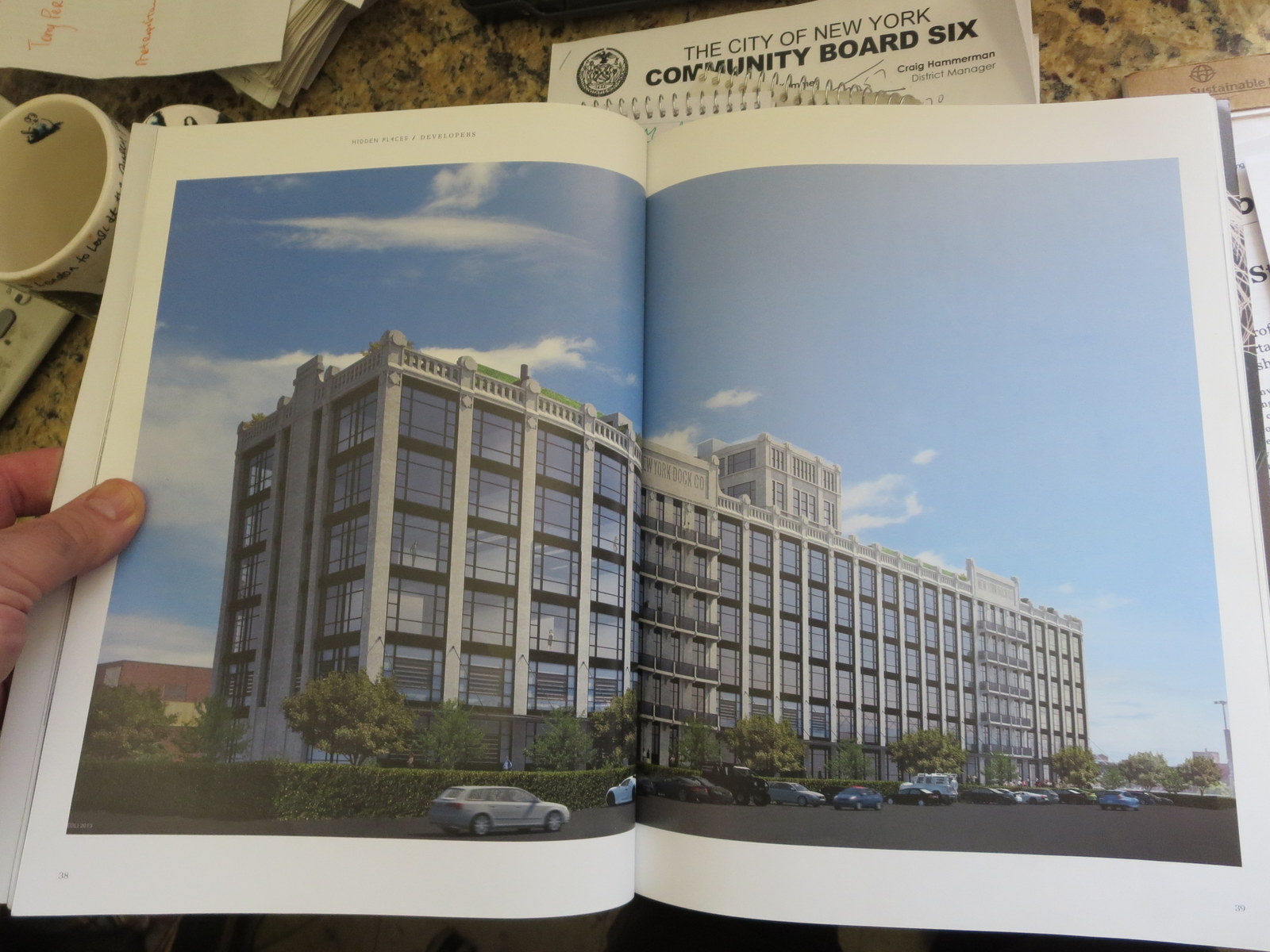
Seventy loft-style apartments – with ceilings ranging from 12-16-feet tall – are planned for the building’s 230,000 square feet, in addition to 6 commercial spaces: art studios, offices and a ground-floor café.
Andreoli minimized internal hallways and inserted 5 elevator cores, which allows for floor-through apartments with views of both Manhattan and Brooklyn on the building’s top 3 floors. The 6th floor, converted water-tower penthouse affords 360-degree views and a rooftop lounge. A garden is planned for building residents.
“I love the views, the location, the sense of space that is created by looking at the Bay of New York,” says Andreoli, who plans on moving into the building when construction is complete.
To project the building against possible flooding, all of the buildings mechanical systems are on the roof and the 2nd floor, Andreoli says. In addition, floodgates will be installed to protect the first floor spaces.
In addition to adding Highlinesque greenery to Imlay Street’s industrial character, the building’s street-level landscaping will double as a sponge during heavy rains or inundation through the use of salt-tolerant plants.
Apartments go on sale in July 2014 and will range in price from $650,000 to upwards of $5 million for a penthouse according to Patti Larroco, the Douglas Elliman broker handling the building’s sales.
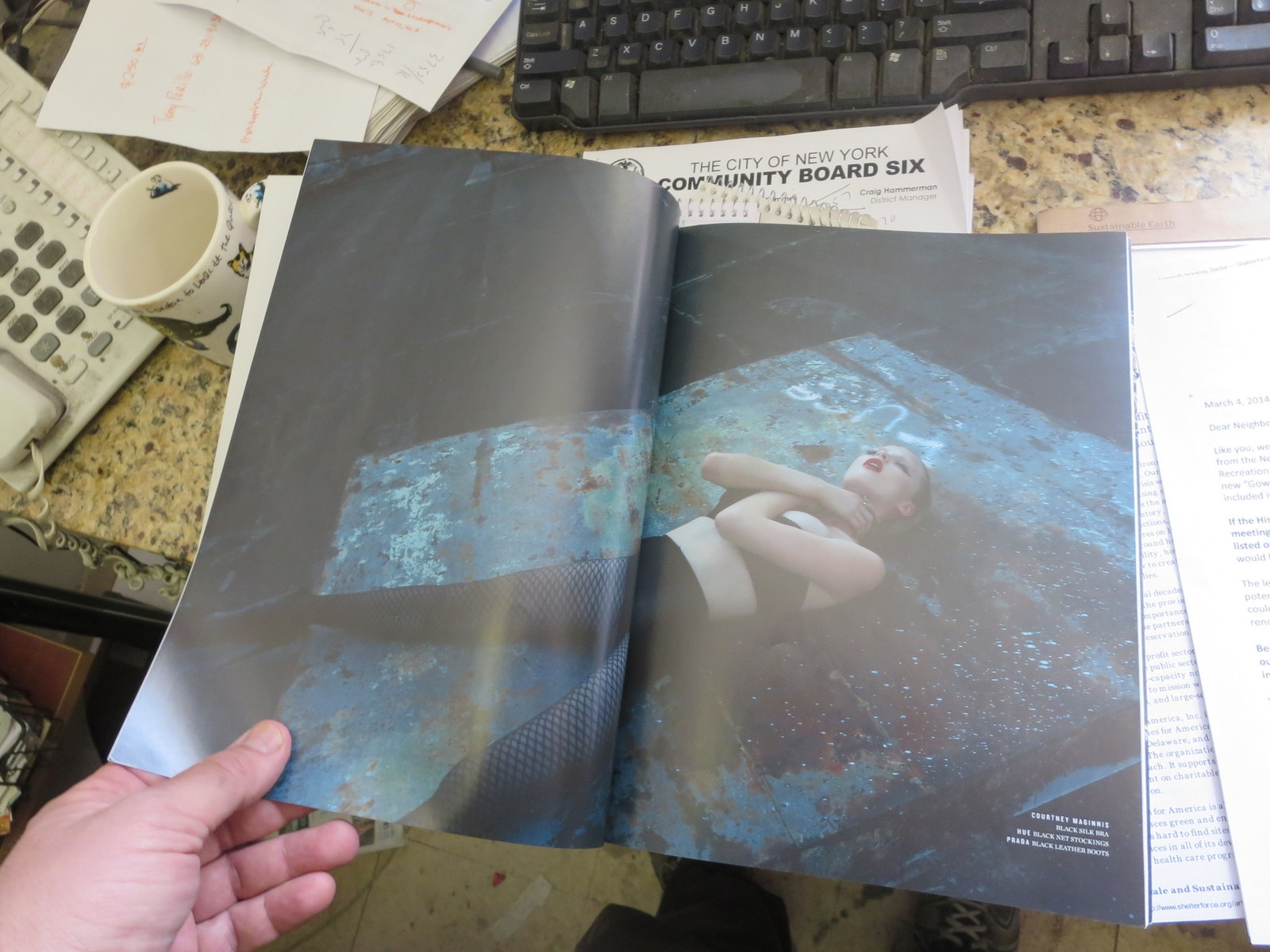
A few blocks south of 160 Imlay is the 202 Coffey Street warehouse, just north of Valentino Park. The area has already seen a growth in development from stores like Steve’s Key Lime, Brooklyn Motor Works and Pier 44 Antiques.
Est4te Four also purchased 202 Coffey Street in 2012 for $11.8 million. The building dates back to the 1880s and served as a production warehouse for high-end purses as well a ship building parts company.
The red-painted brick building has ceilings up to 55-feet tall, exposed wooden trusses, exposed brick walls, oversized windows openings (that are currently bricked up, but will be reopened during renovation) and two courtyards.
The building in its current gritty condition has served as a location for a Vogue Italy fashion shoot and last month, Falconworks Artist Group, a neighborhood theater company, completed an 8-run performance of Romeo and Juliet in the space.
Plans for 202 Coffey Street are still under development, but Est4te Four’s vision includes converting the 130,000 square foot building into a “Global Hub for Art, Creativity, Fashion, Design and Events” the project architect, AA Studio’s website says.
In a 2012 interview with The Commercial Observer, Est4te Four’s head Alessandro Cajrati Crivelli said a photography school and artist studios would be features in the redeveloped space.
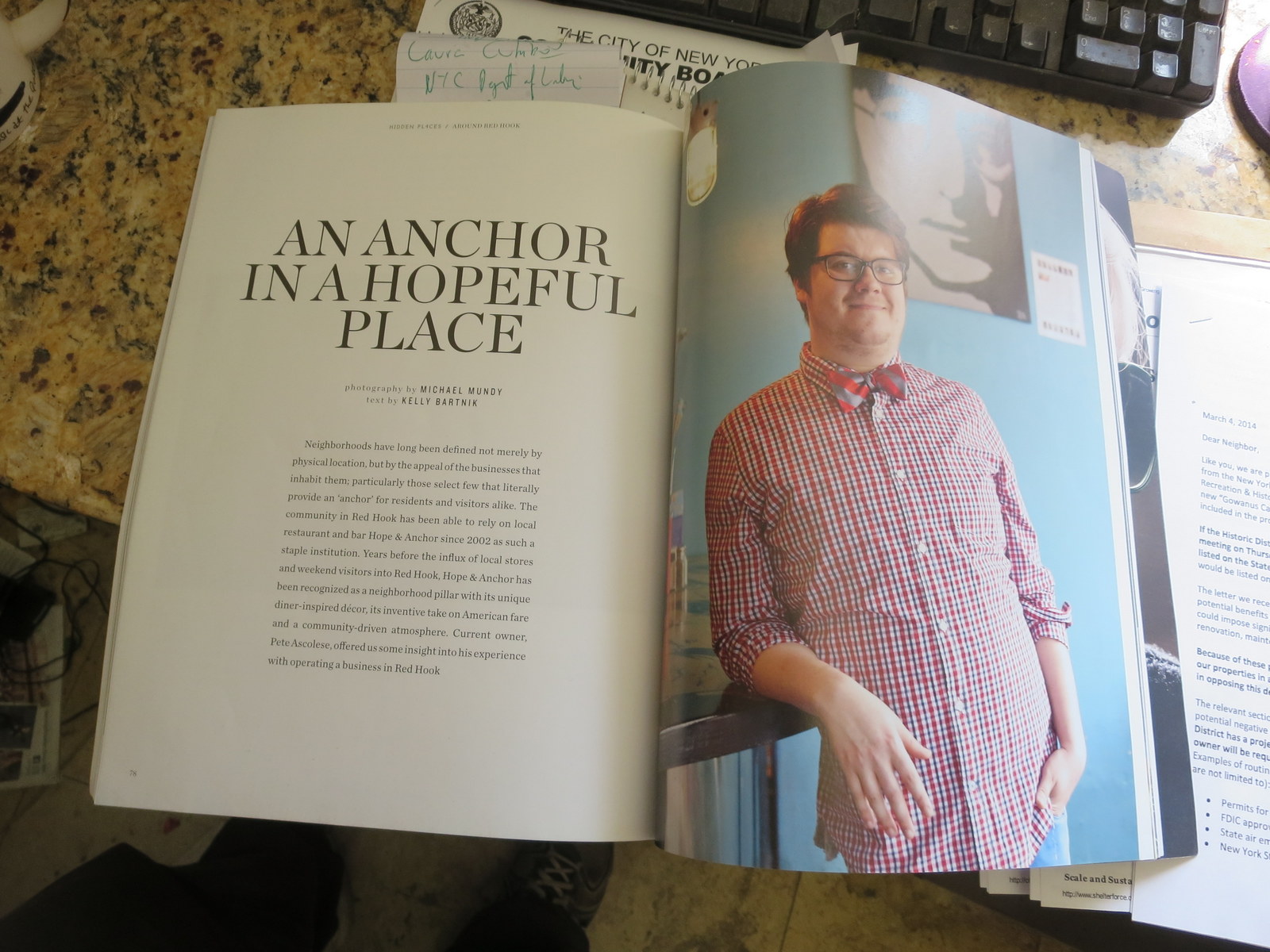
Est4te Four also owns the New York Daily News’s former printing press factories at 68 Ferris and according to the developer’s website, plans on converting the 790,000 square feet of waterfront buildings into a mixture of commercial and residential spaces – and possibly even a hotel.
These plans may sound ambitious, but Est4te Four’s reputation of successful projects – most notably Milan’s Zona Tortona make success all but assured.
Est4te Four transformed a derelict industrial zone in West Milan, Italy into a hub of international fashion with 3.5 million square feet of mixed-use space, which is now home to designers ranging from Armani to Zegna to Brioni, a hotel and the Museum Arnaldo Pomodoro.
They also turned Howlick Place, a former mail sorting facility in London’s Victoria neighborhood, into the epicenter of a growing “cultural quarter” that includes fashion designer Tom Ford’s world headquarters and the contemporary-art auction house Phillips European headquarters.
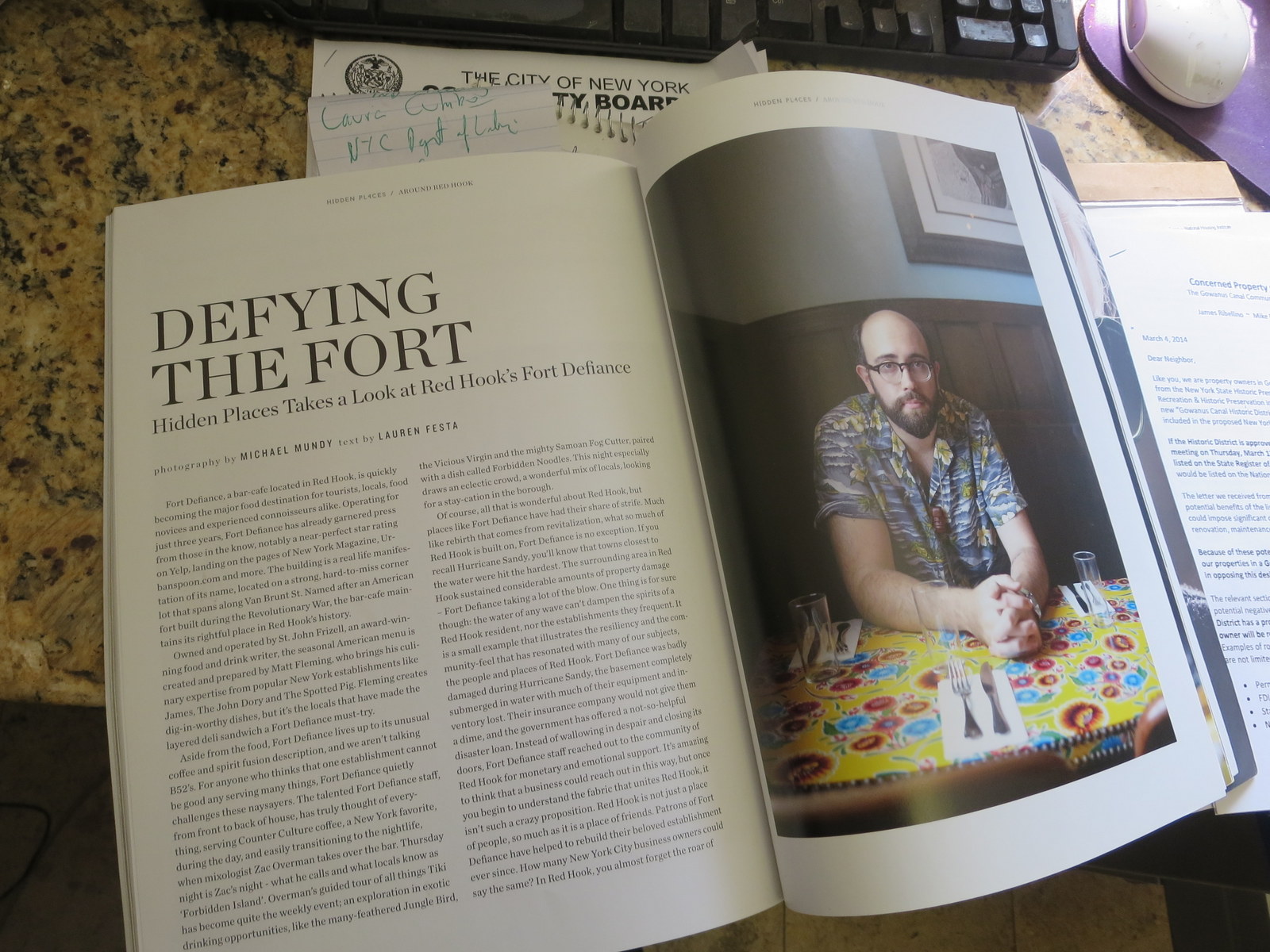
“Through their expertise and connections [Est4te 4 is] able to bring people in the art and fashion business. There’s a movement of creative people that follows them,” Andreoli says.
Est4te Four’s first venture in New York began in Tribeca – creating a full-service film and photo studio for London’s Spring Studios. The studio has already excited the New York fashion community and designers like Michael Kors and Diane von Furstenberg hosted their Fashion Week runway shows at the fledgling studio.
As their Red Hook projects progress, Est4te Four is also working to improve the neighborhood’s accessibility on public transport by lobbying for a new water taxi station and creating a bike-share program (possibly securing the neighborhood a Citi Bike station) according to their self-produced promotional Hidd4n Places magazine.
Neighborhood engagement has been part of the developers plan. The Hidd4n Places magazine featured local artists and business owners like Pier Glass founder Mary Ellen Buxton and The Good Fork’s Ben Schneider.
“My experience with them has been a good one so far. I think they are trying to do something dynamic,” Schneider says. “I’ve always been in love with [the 202 Imlay and 160 Coffey Street buildings]. They’re just so beautiful, so the mere fact that they’re not getting torn down is a great thing,” he says.
And building the community is what Est4te Four has in mind. “We are not only here to try and make money, but have an interest in really making the neighborhood more interesting and livable,” Andreoli says.
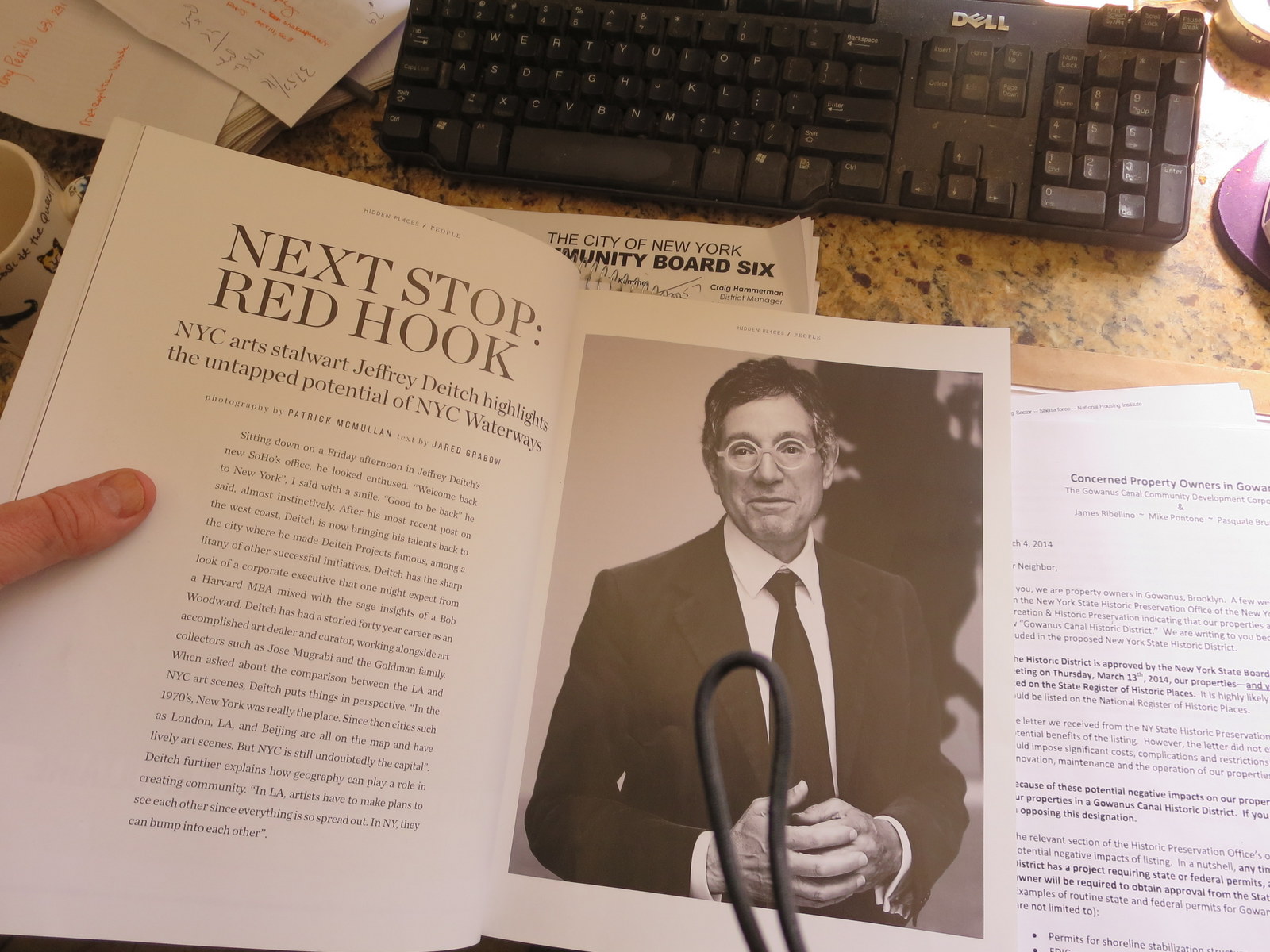

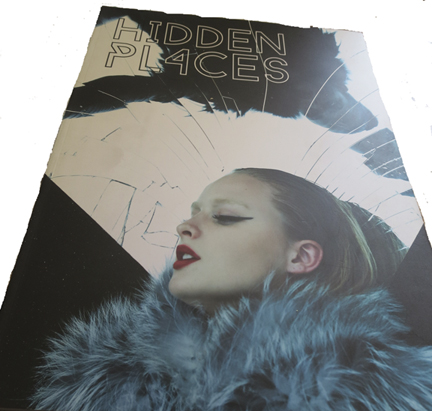
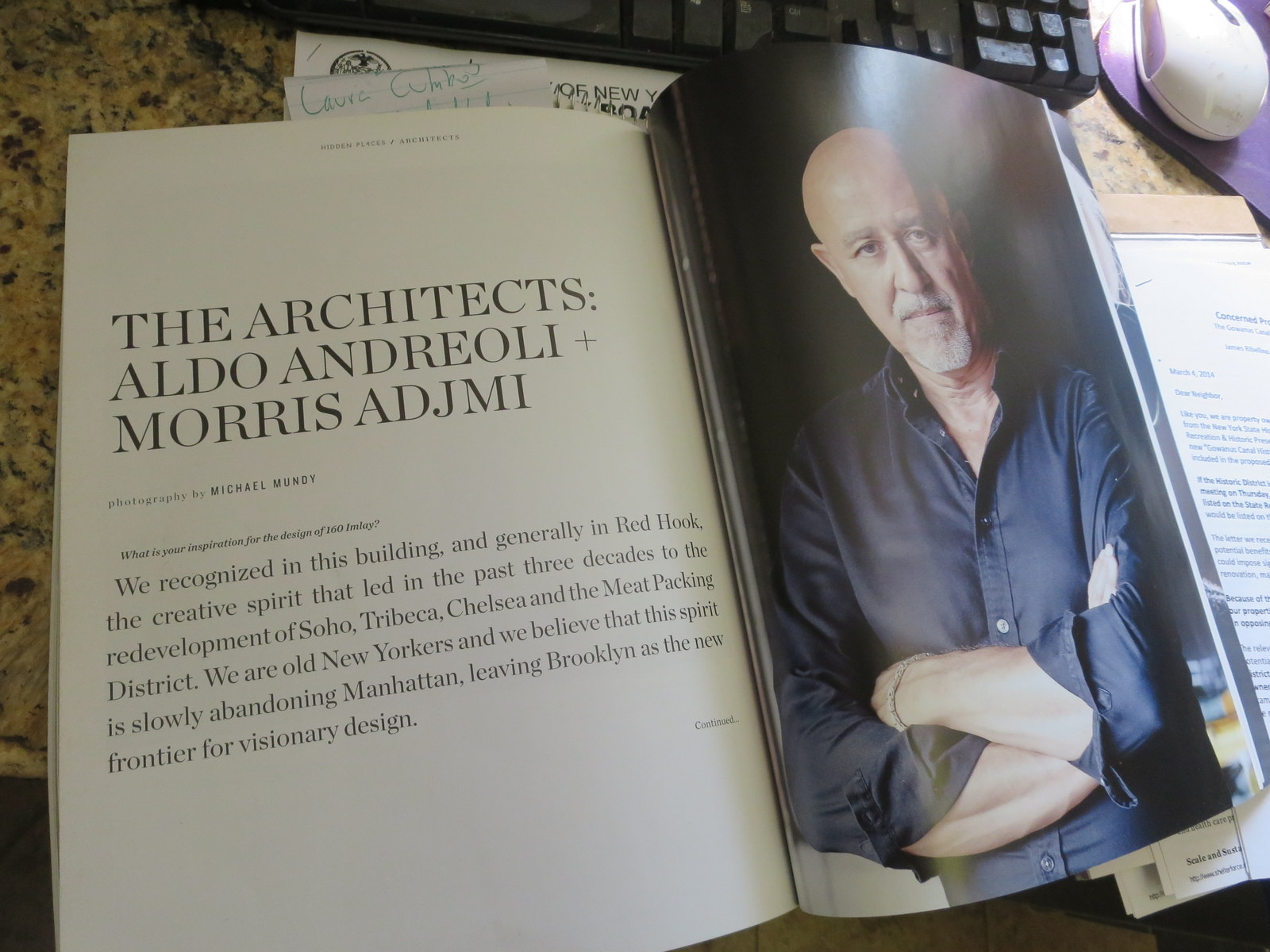








One Comment
Take a look at Maggie’s site…
Handbags??? Some of the greatest pieces of technology were built here in the early 1900’s… The Lidgerwood Cable Drag Way was used to build the Panama Canal and the Tokyo dam to name a few…
http://maggieblanck.com/BrooklynRedHook/Lidgerwood.html